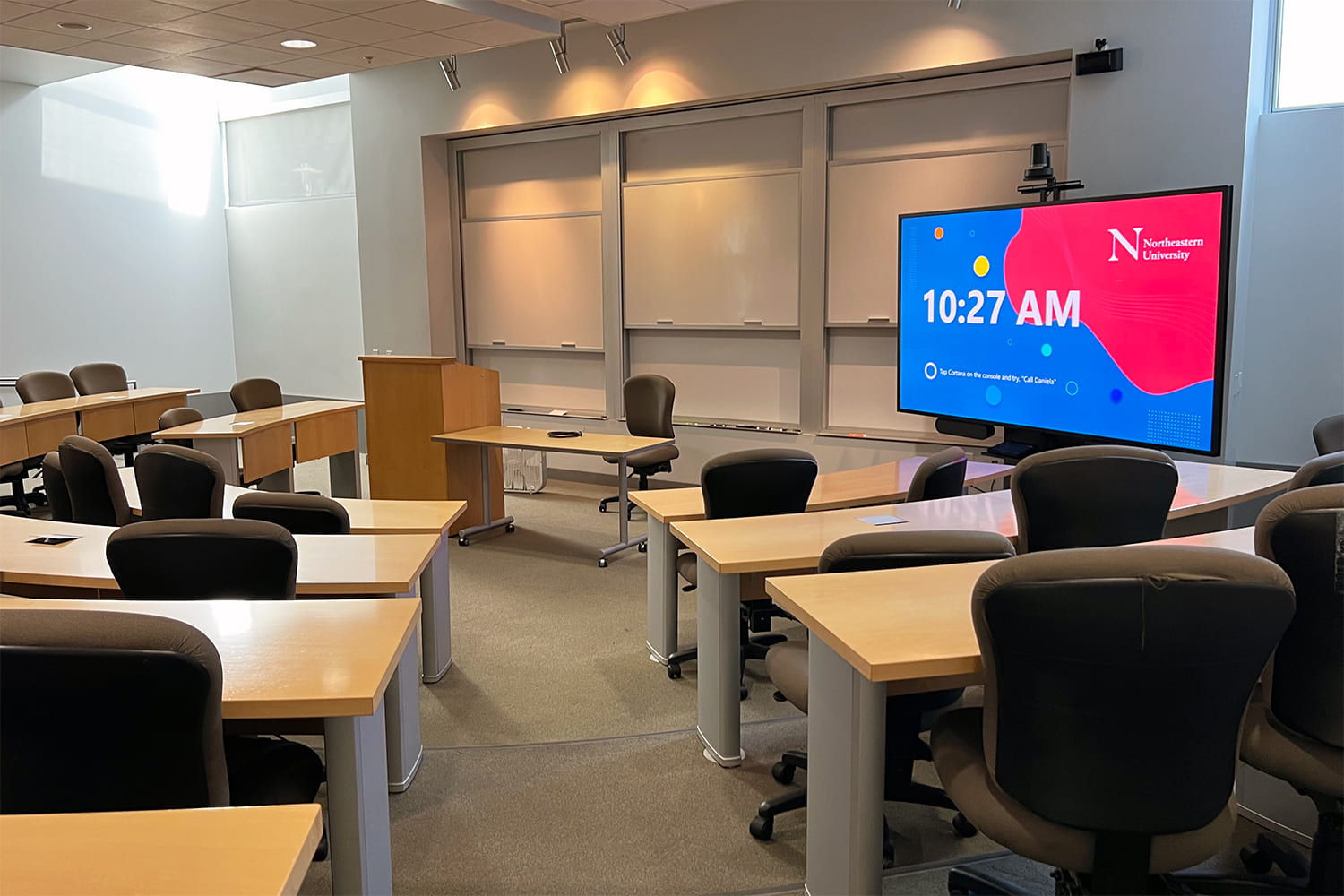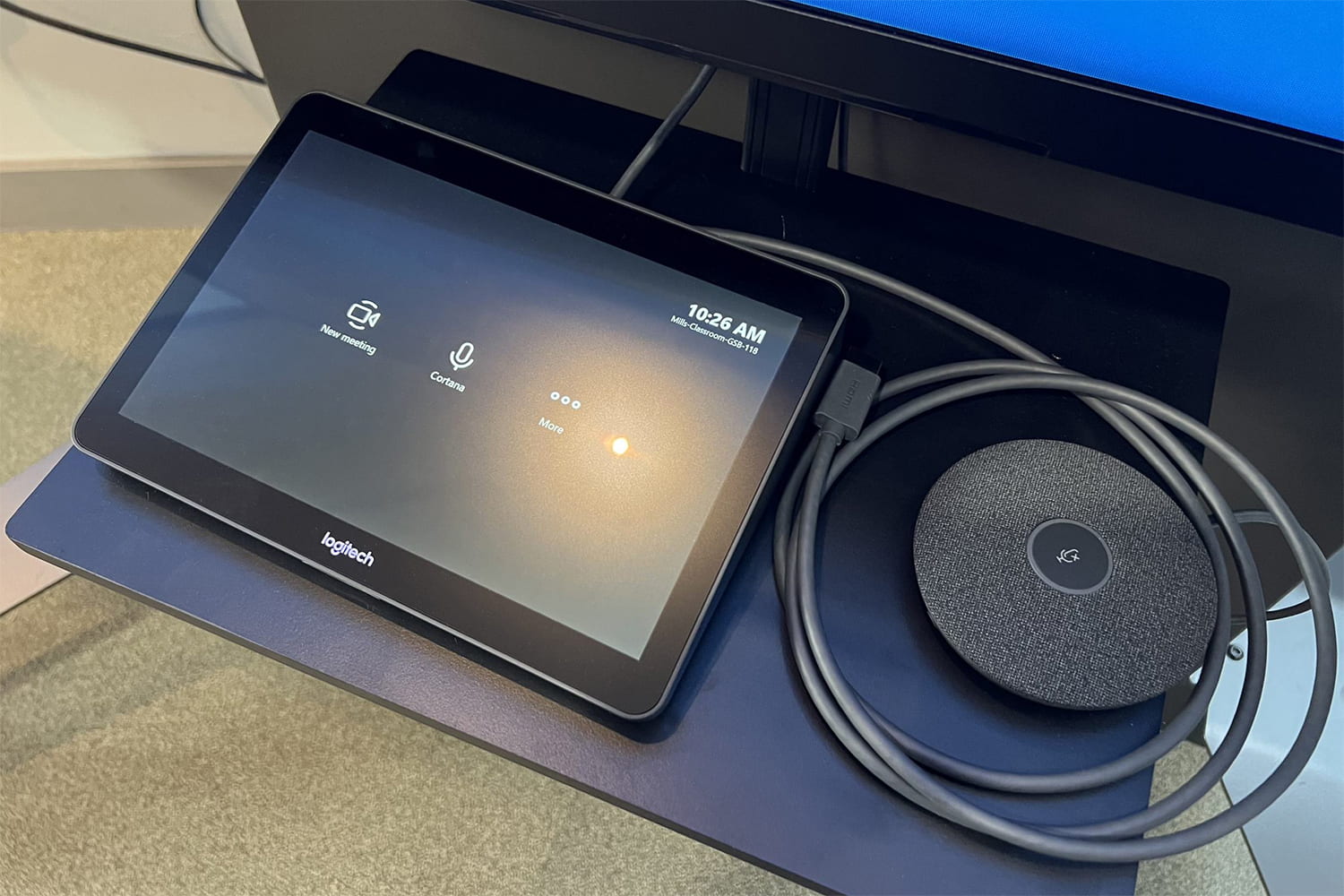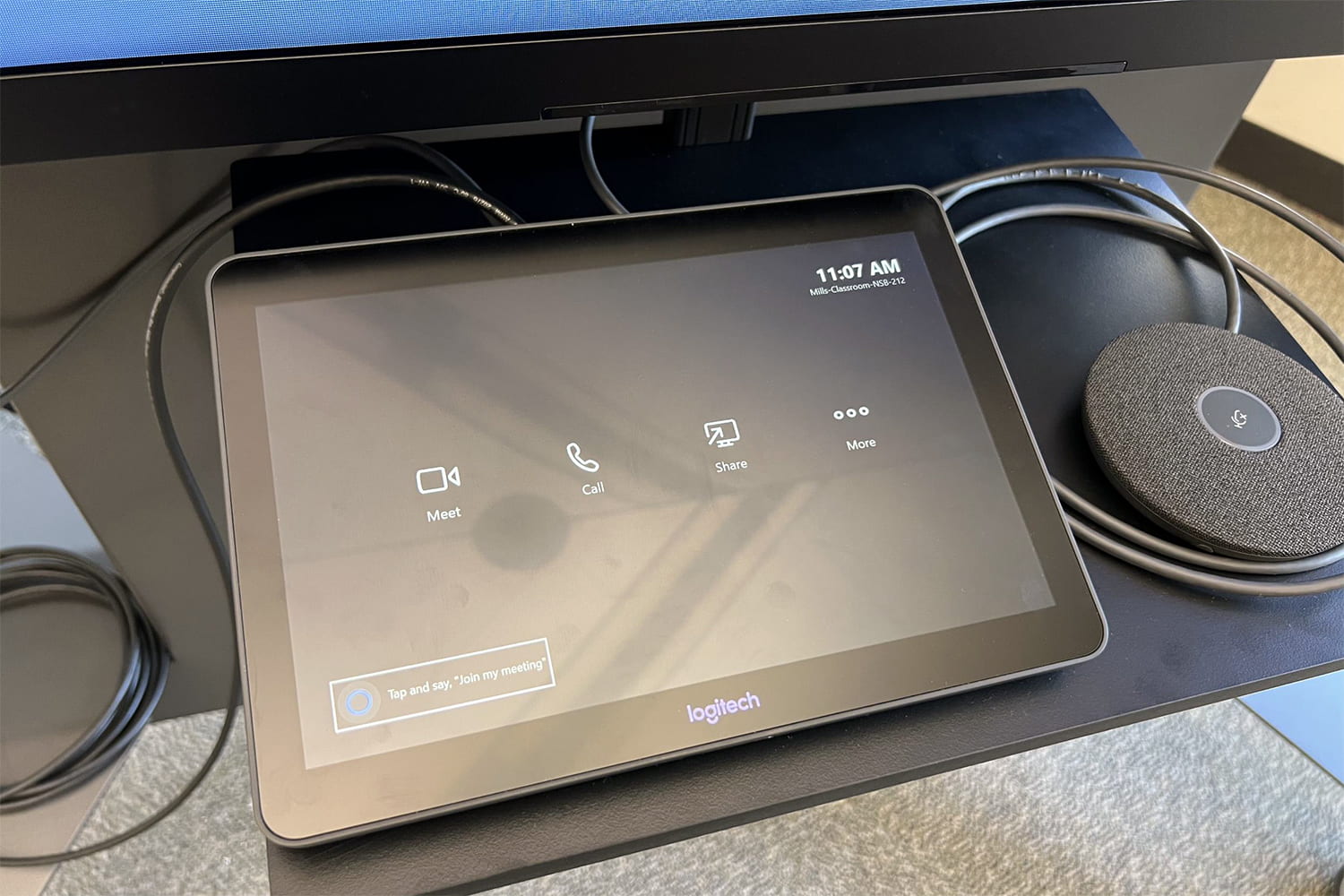Even those outside of higher education have learned that projects at universities and colleges don’t simply wind down during the summer months. Fewer classes and activities—along with fewer people—on campus open up all sorts of possibilities.
At Northeastern, the months between graduation and fall term present the ideal opportunity for IT Services to upgrade classroom and administrative office technology identified as needing a refresh in ITS’s ongoing consultations with the Office of the Provost, Facilities, and other campus partners and leaders.
This past summer, 51 classrooms across Northeastern campuses in Boston, London, and Oakland were modernized, becoming Global Learning Spaces, adding to those created in Seattle and Vancouver earlier in the year. Each learning space provides wireless capabilities and the latest technology: an intuitive touch-screen room control panel; at least one camera, microphone, and large display; and both wired and wireless capabilities for instructors who wish to share content from their own device to the in-room display or with online participants.


The Global Learning Spaces moniker and the classrooms themselves were created in alignment with Northeastern’s goal to have learning spaces where instruction can be delivered anywhere to anyone—and easily. Beyond meeting faculty and student expectations for modern learning environments, the refurbished spaces all adhere to a set of technology standards that fulfill a new vision for a consistent teaching and learning experience across the university’s global campus system, a consistency that makes teaching easier for instructors and learning easier for students.
“These spaces enable faculty to teach globally, from Boston to Vancouver, from Toronto to London, from Charlotte to Oakland,” said Karen McCarthy, ITS’s deputy CIO and associate vice president of ITS operations. “We are committed to being a leading-edge global digital institution that allows us to reach learners across campuses and locations, wherever they may be.”
Not unexpectedly, the global pandemic drove improvements to teaching and collaboration technology. At the same time, in the global workforce, the increase in the number of employees working in a hybrid manner motivated companies to very quickly create new technology that’s better, less expensive, and easier to use, which transformed how classrooms leveraged it.
By necessity, ITS must thrive in this increasingly fast-paced environment and provide next-generation spaces and equipment. Prior to the start of the spring term and continuing throughout the summer, an additional 100 older classrooms were upgraded with touch panels that have a more intuitive, user-friendly interface. Among the redesigned panel’s many features, faculty overwhelmingly approved of the well-placed help button that, with one tap, alerts the classroom support team and triggers a message that help is on the way. Tapping the button after hours immediately connects instructors to elevated IT Service Desk support.


Along with updating some 150 classrooms this year, ITS also ensures that Northeastern’s employees across colleges and administrative units have access to the latest technology. Because technology standards are in place for classrooms, ITS has been able to quickly move forward with updating collaboration spaces, embracing Microsoft Teams and its full capabilities.
Tuned in to the latest technology and its abilities to streamline day-to-day tasks, a great many employees universitywide have sought ITS’s expertise for moving forward.
“The requests are coming fast and furious for ITS to upgrade administrative and office spaces to Microsoft Teams spaces,” McCarthy said. “Clearly, these requests are driven by an increasingly hybrid working environment and that, at any given time, we have colleagues working collaboratively across multiple Northeastern locations. There’s a real need for these spaces to be fully collaborative, enabling all employees to seamlessly work together, regardless of location.”
In a nutshell, classroom technology is now sought-after for office and team use, which is highly productive because, as workspaces adopt technology used in classrooms, “it all ties together and is becoming easier and easier to use,” McCarthy said. “Employees log on to Teams on their personal computer and join a team meeting in much the same way as they enter a meeting in a collaborative space. And because the technology found in our classrooms is similar, faculty and staff are growing more accustomed to using the technology in all venues for all types of collaboration.”
We are committed to being a leading-edge global digital institution that allows us to reach learners across campuses and locations, wherever they may be.”
— KAREN MCCARTHY
DEPUTY CIO AND ASSOCIATE VICE PRESIDENT OF ITS OPERATIONS
Beyond the Boston campus, ITS is partnering to launch technology upgrades across all of Northeastern’s global campuses, including Charlotte, London, Oakland, Toronto, and Vancouver. Because of the sheer number of spaces across the university’s global system—and the speed at which technology advances—room technology constitutes a continuous project: Upgrades to existing space and build-outs of new spaces and campuses are always being considered and planned for.
“Every year, ITS and its partners identify those classrooms that are really in need of an upgrade, and we target them for technology updates,” McCarthy said. “The process is ongoing and never stops. Every five years, if not increasingly more often, we need to examine rooms that we’ve already updated to determine if they need to be overhauled or simply refreshed. It’s a continuous process. Everything changes so quickly, and technology can be outdated in as little as three years.”
Notwithstanding technology’s speed of development, ITS is well positioned and equipped to keep pace. And the unit’s work to upgrade learning and office spaces each summer is a significant marker, indicative of its commitment to the vision for Northeastern’s digital transformation: to elevate the faculty and student experience, and to make the work of staff easier and more effortless.
